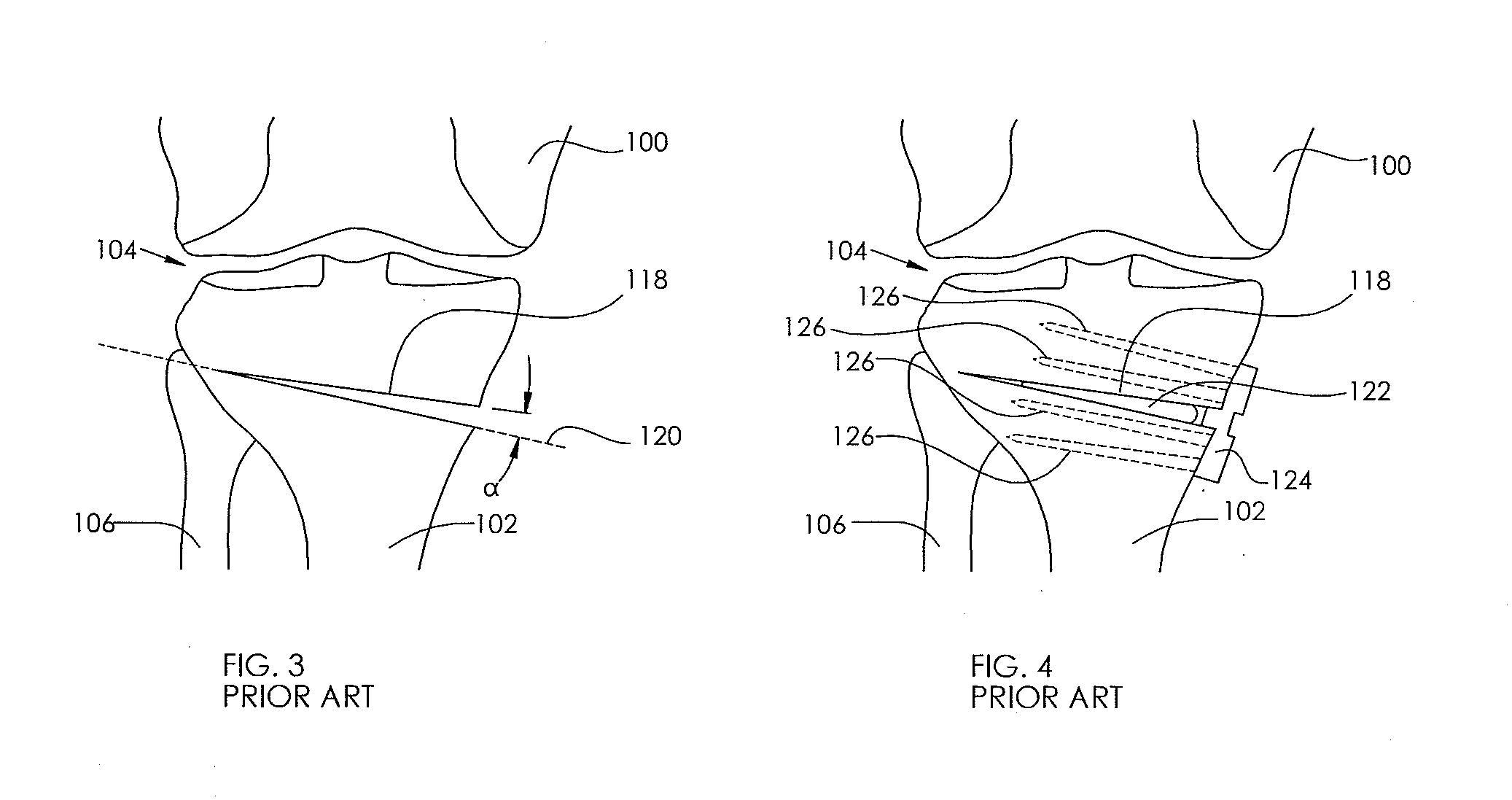Adjustable devices for treating arthritis of the knee
a technology of adjustable devices and knees, applied in the direction of osteosynthesis devices, prosthesis, diagnostic recording/measuring, etc., can solve the problems of deep vein thrombosis, significant post-operative pain, and need substantial physical therapy
- Summary
- Abstract
- Description
- Claims
- Application Information
AI Technical Summary
Benefits of technology
Problems solved by technology
Method used
Image
Examples
Embodiment Construction
[0076]FIG. 1 illustrates a standard alignment of a femur 100, a tibia 102 and a knee joint 104, wherein a hip joint (at a femur head 108), a knee joint 104 and an ankle joint (at the midline of distal tibia 110) are oriented along a single line 112. A fibula 106 is shown alongside the tibia 102. The knee joint 104 of FIG. 2 is shown in an arthritic state, in which a medial compartment 114 has been compromised, causing the line 112 to pass medially off the center of the knee joint 104.
[0077]FIG. 3 illustrates an open wedge osteotomy 118 formed by making a cut along a cut line 120, and opening a wedge angle α. FIG. 4 illustrates the final setting of this open wedge by the placement of bone graft material 122 within the open wedge osteotomy 118, and then placement of a plate 124, which is then secured to the tibia 102 with tibial screws 126.
[0078]FIG. 5 illustrates a tibia 102 with a non-invasively adjustable wedge osteotomy device 128 implanted. The non-invasively adjustable wedge ost...
PUM
 Login to View More
Login to View More Abstract
Description
Claims
Application Information
 Login to View More
Login to View More - R&D
- Intellectual Property
- Life Sciences
- Materials
- Tech Scout
- Unparalleled Data Quality
- Higher Quality Content
- 60% Fewer Hallucinations
Browse by: Latest US Patents, China's latest patents, Technical Efficacy Thesaurus, Application Domain, Technology Topic, Popular Technical Reports.
© 2025 PatSnap. All rights reserved.Legal|Privacy policy|Modern Slavery Act Transparency Statement|Sitemap|About US| Contact US: help@patsnap.com



